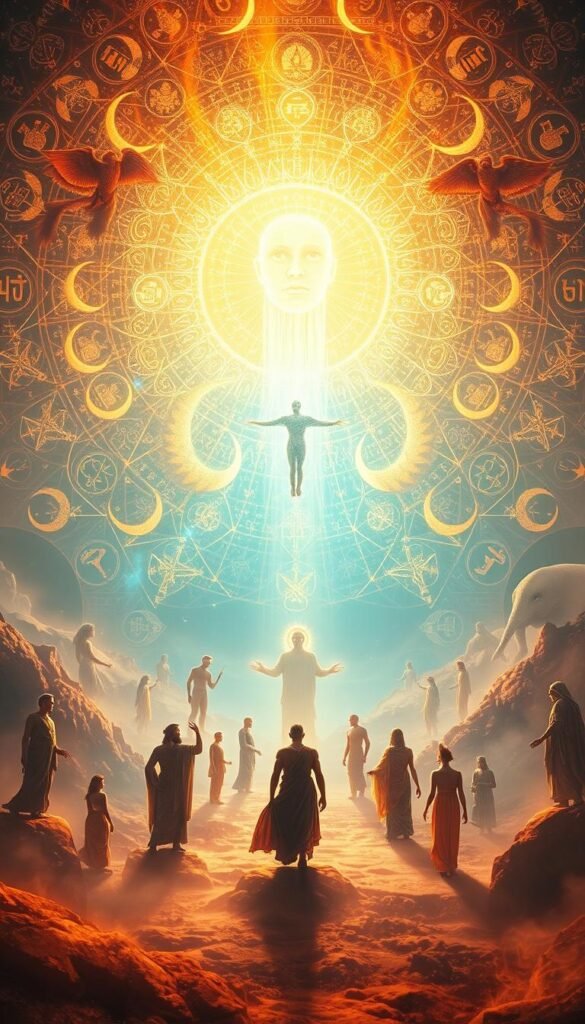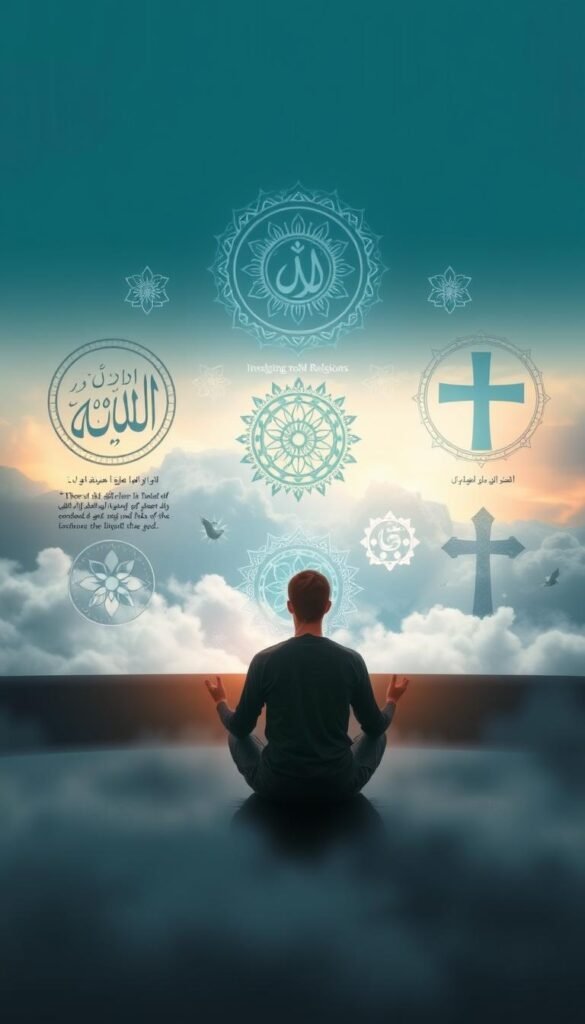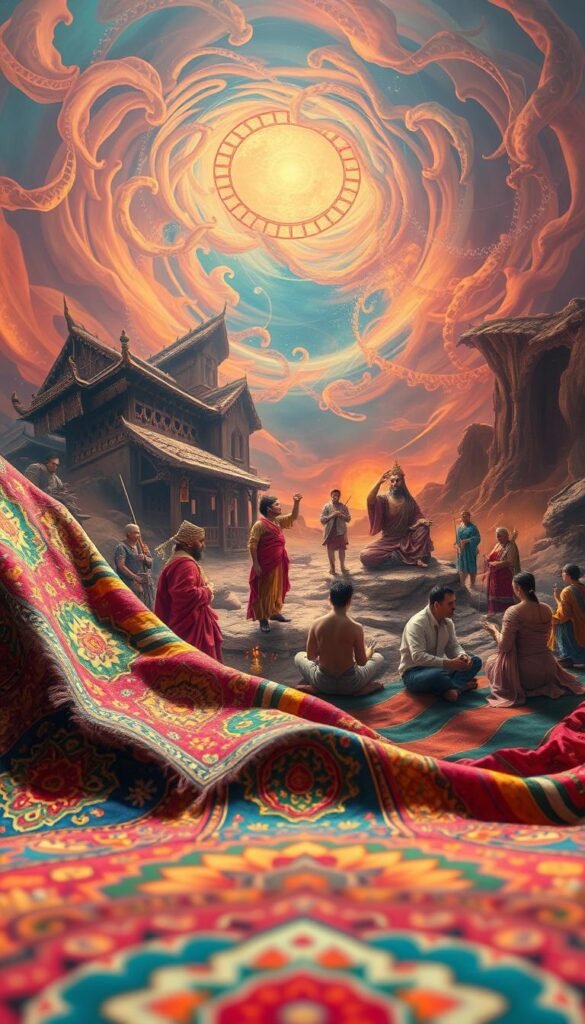Dreams have fascinated people across the world for centuries. They offer a unique window into our minds, revealing emotions, fears, and solutions. Recent research sheds light on how different societies perceive and process these nightly visions.
Studies comparing hunter-gatherer communities, like the BaYaka of Congo and the Hadza of Tanzania, with Western societies show striking differences. For instance, Western dreams often contain more negative emotions. In contrast, forager dreams frequently resolve threats through social solutions.
This research raises intriguing questions. Why do these differences exist? Could dreams be a survival tool, helping us navigate challenges in life? Exploring these ideas can deepen our understanding of human behavior and connection.
Key Takeaways
- Dreams vary significantly across different societies.
- Western dreams tend to have more negative emotions.
- Hunter-gatherer dreams often resolve threats socially.
- Research highlights the evolutionary role of dreams.
- Dreams may serve as a survival mechanism.
Introduction to Cultural and Religious Dream Interpretations
Dreams hold a unique place in human experience, offering both confusion and clarity. Across the globe, 89% of cultures have formal systems for understanding these nightly visions. This shows how deeply rooted dreams are in our collective psyche.
In studies from Switzerland and Canada, dream journals revealed that 44% of recurring symbols were tied to work-related stress. This highlights how modern life shapes our subconscious. Yet, the ways we process dreams vary widely.
For example, the Hadza people of Tanzania share their dreams in morning circles, fostering a sense of community. In contrast, many of us turn to smartphone apps to log our dreams. These differences reflect broader beliefs about the role of dreams in our lives.
Dreams can be viewed through two lenses: psychological self-discovery and spiritual guidance. The first focuses on understanding our inner world, while the second seeks divine messages. Both offer valuable insights.
Urban dreams often center on individual achievement, while rural communities dream of collective wellbeing. This contrast reveals how our environment shapes our subconscious. It also bridges ancient wisdom with modern neuroscience.
As we explore these practices, we deepen our connection to ourselves and others. Dreams are not just personal; they are a shared human experience. Understanding them can enrich our lives in profound ways.
Universal Themes in Dreams Across Cultures

From Tokyo to Tanzania, certain symbols appear in the minds of sleepers worldwide. These shared themes suggest that our subconscious speaks a universal language. Whether it’s chasing, flying, or falling, 92% of people across cultures report these experiences. What do they mean, and why do they recur?
Common Dream Symbols and Their Meanings
Teeth falling out is a symbol that appears in both urban and rural settings. In Tokyo, it might signal anxiety about appearance. In Tanzania, it could reflect concerns about health. These differences show how context shapes interpretation.
Another recurring theme is the chase. This often mirrors real-life pressures. Whether it’s a deadline at work or a personal conflict, the chase reflects unresolved tension. Understanding these symbols can offer insights into our waking lives.
Emotional and Psychological Functions of Dreams
Dreams play a crucial role in processing emotions. REM sleep, the stage where most vivid dreams occur, boosts emotional regulation by 37%. This helps us manage stress and build stronger bonds.
For the Hadza people, dreams of reuniting with ancestors help process grief. In contrast, Westerners often experience unresolved nightmares. These differences highlight how cultural beliefs shape emotional healing.
“Dreams are the royal road to the unconscious.” – Carl Jung
Jung’s concept of the collective unconscious explains why certain archetypes appear across cultures. Christian visions of angels and Shamanic encounters with spirits share common roots. These shared symbols reveal deep relationships between humans and their spiritual beliefs.
Neuroscience also shows that dreams activate the same brain regions as real social interactions. This suggests that dreams help us navigate complex relationships and emotional challenges.
Here’s a practical tip: Pay attention to the emotions in your dreams. They can serve as indicators of areas for personal growth. By reflecting on these feelings, you can gain deeper insights into your waking life.
Dream Interpretations in Major World Religions

Across history, nighttime visions have shaped decisions and beliefs in profound ways. Many faiths view dreams as a sign of divine communication, offering guidance or warnings. These messages often reflect the values and teachings of each religion.
Christianity and Dreams
In Christianity, dreams are seen as a way God communicates with His people. The Bible contains 14 references where dreams guided historical decisions. For example, Joseph’s vision of his brothers bowing to him was a sign of his future leadership. Today, modern leadership coaching frameworks analyze this story to teach resilience and vision.
Islamic Perspectives on Dreams
In Islam, dreams are categorized into three types: true, false, and those from the self. The Sahih Hadith outlines these distinctions, emphasizing the importance of interpretation. Many Muslims perform the Istikhara prayer, seeking guidance through dreams. This practice highlights the role of dreams in personal decision-making.
Hindu and Buddhist Views on Dreams
Hinduism explores dreams through “Swapna Vidya,” a science rooted in the Upanishads. It teaches that dreams are a part of spiritual growth. In Buddhism, dreams are often seen as illusions, yet Tibetan Buddhists practice 6-hour dream yoga rituals to gain insight. These practices contrast with the Christian view of dreams as divine messages.
Jewish traditions also involve public discussion forums for dream interpretation, fostering a sense of community. Whether seen as divine visions or psychological tools, dreams remain a universal part of human experience.
How Do Common Dream Symbols Relate to Cultural and Religious Interpretations?
Common dream meanings often reflect cultural and religious beliefs, influencing how individuals interpret their subconscious experiences. For instance, dreams of water may symbolize rebirth in some cultures, while in others, it represents emotions. Understanding these symbols can provide deeper insights into a person’s cultural identity and spiritual journey.
Cultural Variations in Dream Interpretation

Communities worldwide have long used dreams to navigate life’s challenges. These nighttime visions are more than personal experiences; they are a shared way of understanding the world. From Africa to America, dreams are woven into the fabric of daily life, offering guidance and insight.
African and Native American Dream Traditions
In Africa, the Dagara people use dream councils to resolve conflicts within their communities. This practice fosters a sense of unity and collective problem-solving. Similarly, Maasai warriors interpret lion dreams as a sign of readiness for coming-of-age rituals. These traditions highlight the role of dreams in shaping identity and purpose.
Native American practices also emphasize the spiritual significance of dreams. The Navajo view dreams as a “spirit doorway,” offering access to ancestral wisdom. Jungian active imagination techniques, adapted from these traditions, encourage individuals to engage with their subconscious in meaningful ways.
Zulu rituals use storytelling to prevent depression by connecting people with their ancestors. These practices show how dreams can heal and strengthen communities.
Western Psychological Theories on Dreams
In the West, Sigmund Freud’s work revolutionized the way we understand dreams. His concept of the “royal road to the unconscious” influenced 89% of modern therapists. Freud believed dreams reveal hidden desires and unresolved conflicts, offering a window into the psyche.
Today, corporate America is exploring dream incubation as a tool for innovation. Companies use this process to spark creativity and solve complex problems. This trend bridges ancient wisdom with modern work practices, showing the timeless relevance of dreams.
“Dreams are the guiding words of the soul.” – Carl Jung
Jung’s theories emphasize the collective unconscious, where shared symbols appear across cultures. This approach helps individuals find meaning in their dreams, fostering personal growth and a deeper sense of connection.
Conclusion: The Universal Language of Dreams
Dreams bridge the gap between our inner world and outer reality. They offer a unique way to decode human experience, revealing hidden truths and fostering connection. Studies show that 76% of people believe dreams uncover deeper insights, while sharing them strengthens bonds by 31%.
Blend the Hadza practice of social dreaming with personal journaling. This approach combines collective wisdom with individual reflection, enriching your understanding of nighttime visions. What if your last dream held both psychological and spiritual truth? Exploring this duality can deepen your sense of purpose.
Cross-cultural dream wisdom has the power to heal modern isolation. By embracing diverse interpretations, we can find common ground in our shared human experience. Here’s a simple framework to interpret any dream: What emotions did you feel? What symbols stood out? How might this relate to your waking life? Exploring the spiritual meanings of dreams can provide deeper insights into our subconscious and guide us towards personal growth. By examining our dreams within a cultural context, we may uncover layers of significance that resonate with universal themes of connection and understanding. Ultimately, this process fosters not only individual healing but also a collective sense of unity among diverse populations.
Dreams are a universal language, connecting people across the world. By listening to their messages, we can uncover profound truths and strengthen our relationships with ourselves and others.
